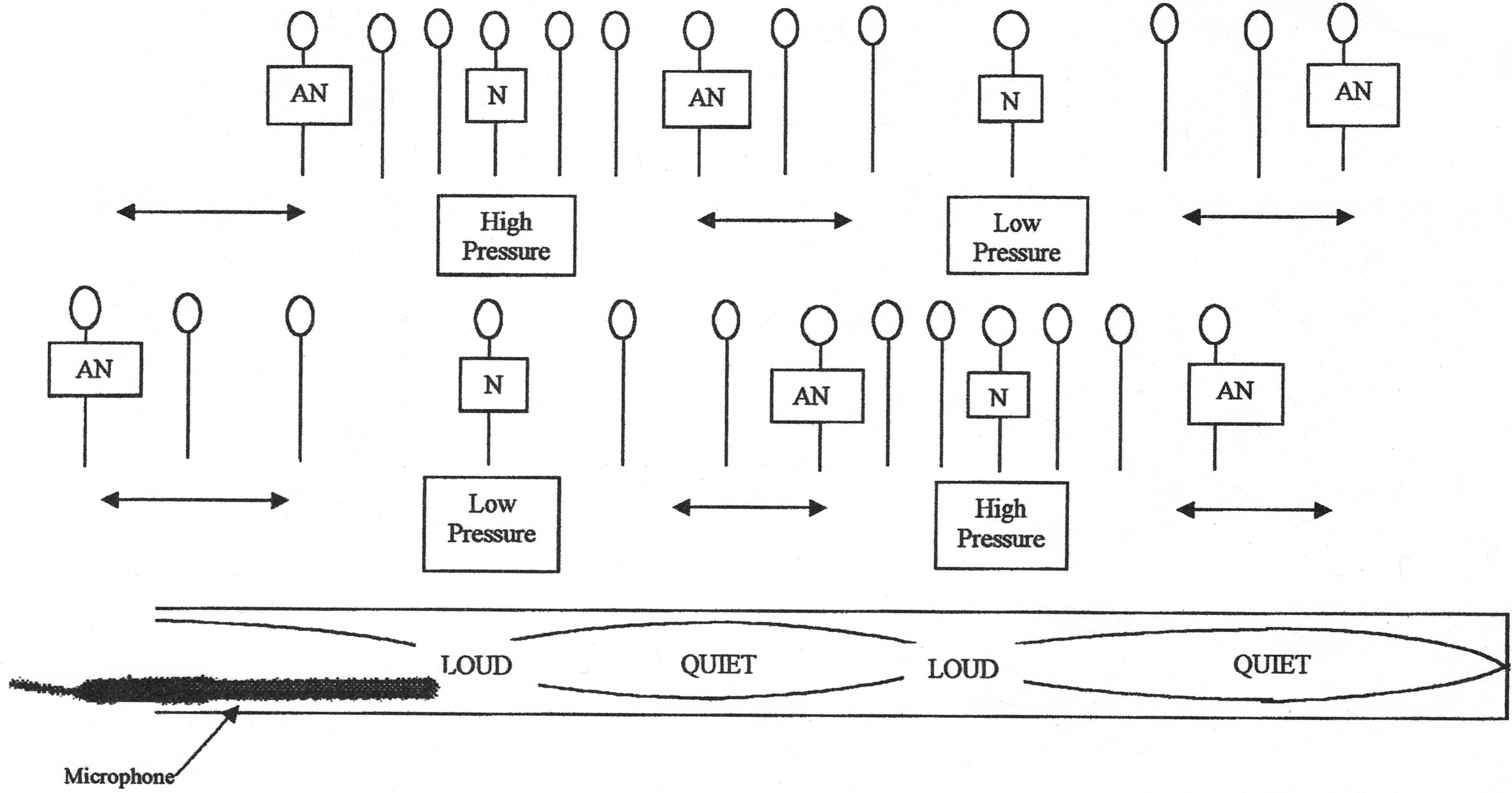Pressure vs. Particle Movement — The Dance
September 01, 2003 Filed in:
Demo CornerDiana Hall, Bell High School, Nepean
When discussing standing waves in air columns most textbooks focus on the movement of particles and show nodes at closed ends and antinodes at open ends. When thinking about the loudness of sound we have to remember that the sound is loud when the pressure difference is the greatest and that sound is a longitudinal wave. This occurs at nodes (where particles move the leave) and not the antinodes (where particles move the most). I use my students to demonstrate this difference.
Have students line up. Individual students represent particles at different positions along an air column. We know that a series of nodes and antinodes will be set up. If we label the students according to the motion of the particles, the nodes will not move while the antinodes will move the most. I actually label the nodes and antinodes with masking tape. Since sound is a longitudinal wave the antinodal particles will move back and forth from side to side by the most (greatest amplitude). The particles beside the antinodes will move less etc. The antinodes will alternate left right. I then ask the nodes what they felt. It turns out that the nodal people report the biggest difference in pressure while the antinodes report the least. This means that the loud points actually occur at the nodes for particle movement. Using a large tube and a computer interface equipped with microphones, this phenomenon can be tested and confirmed.

Column Editor: Ernie McFarland, Physics Department, University of Guelph, Guelph, Ontario, N1G 2W1 Tags: Waves and Sound


